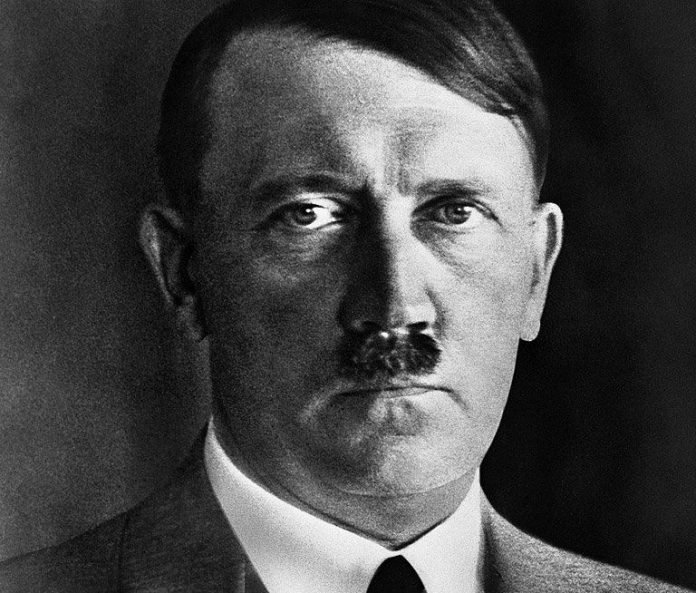DISCLOSURE: VT condemns the horrific tragedy committed by the NAZI Party against Jewish Citizens of Europe during Word War II known as the "Holocaust". VT condemns all racism, bigotry, hate speech, and violence. However, we are an open source uncensored journal and support the right of independent writers and commentors to express their voices; even if those voices are not mainstream as long as they do NOT openly call for violence. Please report any violations of comment policy to us immediately. Strong reader discretion is advised.
Eminent film scholar and historian Thomas Elsaesser of the University of Amsterdam argues that
“The Holocaust…has also been institutionalized as paradigmatic for cultural memory. And as a paradigm, it serves political and didactic uses, it is a moral rallying point, and it has become a means of renegotiating national identities, after the demise of political ideologies and social utopias as the end of the twentieth century.”
He moves on to say,
“That this memory was in large part fashioned from unreliable, objectionable but indispensable visual evidence, and has been sustained by the genres, narratives and visual tropes of television and mainstream cinema, motivated as these media no doubt also are commercial considerations, adds another challenge burden.”[1]
With the culmination of the Goldhagen thesis, which basically says that ordinary Germans are intrinsically bad people and therefore are responsible for Nazi Germany—a grossly and demonstrably false claim—the Holocaust has certainly been institutionalized.
Yet there was no time in German history that the Goldhagen thesis could even remotely be justified. As Sarah Gordon put it, “In the Austro-Hungarian Empire, of the 300,000 Jews who served in World War I, 25,000 were officers, 25,000 died in battle. There were 76 Jewish chaplains, all holding the rank of captain.
“During the war, 24 Jews attained the rank of general, 76 received the Gold Medals for bravery, and 22 the Orders of the Iron Crown Third Class. General Baron Samuel Hazai, a baptized Jew, was ‘practically the most important officer in the whole monarchy’ beside the general staff ‘commanding recruiting and supplies.’
“In Vienna’s Jewish cemetery alone are buried 160 lieutenants, 40 captains, 40 colonels, 16 majors, and 20 generals.”[2]
Then comes a deathblow to the Goldhagen thesis:
“After World War I, General von Deimling urged all Germans to remember ‘that thousands of Jews went to the war voluntarily—that thousands died heroes’ deaths for the fatherland—that thousands were crippled for life. In my corps, the Jews fought as bravely as their Christian comrades and to many of them I presented the Iron Cross.’”[3]
Gordon continues,
“At the turn of the nineteenth century, conversion rates began to increase. Between 1880 and 1920, some 29,000 Jews converted to Christianity in Germany (an average of 725 per year). Between 500 and 700 Jews in Vienna converted to Christianity annually during the same period.
“Sociologist Arthur Ruppin estimates that between 1868 and 1929, some 28,777 left Judaism in Vienna primarily to marry non-Jews. No other city in Europe had a conversion and dissident rates as high as Vienna.”[4]
When Jews converted to Christianity, there was certainly cultural docility to the moral order precisely because the revolutionary/subversive spirit died among many, and hostility or anti-Jewish reaction plummeted.[5]
More importantly, after conversion, Jews felt more at ease to not only assimilate, but intermarry. “The demographer Felix Theilhaber predicted in 1911 that because of conversion, intermarriage, and dissidents, no Jews would be left in Germany by the year 2000.”[6]
It was pretty clear that some conversions were sincere, and some were not, since
“many Jews converted because they desired more honor, freedom to marry whomever they wanted, better social standing, and better positions at work. Christianity was the predominant religion, and thus many Jews followed it to become better Germans.
“Christian-German society seemed willing to accept converts…The majority of Jews who converted did so solely to assimilate. For example, when the famous German Jewish poet and writer Heinrich Heine converted, he claimed he had bought ‘an entry ticket to European culture.’”[7]
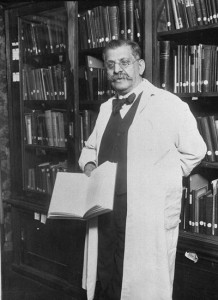
Given these complex issues, it is within the realm of the historical data to assert that Nazi Germany became a sort of defense mechanism—a counter-response to Jewish revolutionary activities perceived to be dangerous for Germany and much of Eastern Europe.
Several Jewish scholars and historians agree on this point. Martin Bernal for example mentions that from 1920 to 1939, “Anti-Semitism intensified throughout Europe and North America following the perceived and actual centrality of Jews in the Russian Revolution.”[8]
Gordon declares:
“Hitler’s hatred of the Jews was based on his belief that they fomented wars that were against the national and racial interests of the countries involved, and that Jews were the only gainers from these ‘unnatural’ wars that resulted from conspiracies of ‘international Jewry.’
“To Hitler Jews were not merely ‘diverting’ other nations, but they were a positive threat to both their internal and external security…According to Hitler, the failure of nations to recognize their true interests by waging war against the Jews would result in apocalyptic consequences.
“As he put it, ‘If the Jew with his Marxist creed remains victorious over the nations of this world, then his crown will be the wreath on the grave of mankind, then this planet will once more, as millions of years ago, move through the ether devoid of human beings.”[9]
Even Lucy S. Dawidowicz, of all people, would somewhat agree. Hitler, according to Dawidowicz,
“had discovered that Jews dominated the liberal press in Vienna and the city’s cultural artistic life, that they were behind the Social Democratic movement—Marxism. Triumphantly he had at last found an answer to the original question he had posed about the Jew: ‘The Jew was no German.’”[10]
To quote Hitler, “In my eyes, the charge against Judaism became a grave one the moment I discovered the Jewish activities in the press, in art, in literature and the theatre.”[11]
He later described how the Jewish elite in the theatre was corrupting the morals of the culture. He also complained that some of the materials produced in the theatre were of a pornographic nature.[12] Here he was right.
Theater in Germany began to produce films such as The Cabinet of Dr. Caligari (1920), directed and written by Jewish producers Robert Wiene and Hans Janowitz. This particular film was teleological in nature: it was supposed to hypnotize audiences in an expressionist and psychoanalytic form.[13]
Other films of the same genre included Carl Mayer’s The Last Laugh (1924), Fritz Lang’s Metropolis (1927), Madchen in Uniform (1931), and Kuhle Wampe (1932).[14] Madchen in Uniform was an explicitly pro-lesbian film, something that was completely contrary to the Prussian education system at the time, and many of the cast in the movie were Jewish.
Film scholar Richard W. McCormick of the University of Minnesota declares that this film “threatened the status quo” of the Weimar Republic in the 1920s.[15] McCormick continues,
“Madchen in Uniform is a film that is implicated within a number of progressive and emancipator discourses of the late Weimar Republic: the movement for homosexual rights and the flourishing of urban, queer subculture.
“‘New Objectivity’ and other avant-garde tendencies in the arts and popular culture; and the intersection of modernity, the movies, and the democratic egalitarianism.”[16]
Philo-Semitic historian Paul Johnson himself tells us that films like Blue Angel were so corrupt that they
“could not be shown in Paris. Stage and night club shows in Berlin were the least inhibited of any major capital. Plays, novels and even paintings touched on such themes as homosexuality, sadomasochism, transvestism and incest; and it was in Germany that Freud’s writings were most fully absorbed by the intelligentsia and penetrated the widest range of artistic expression.”[17]
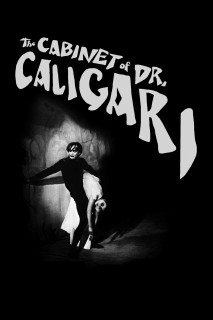 Many of these films were labeled “decadent” as soon as Hitler rose to power, and many of the producers fled Germany.
Many of these films were labeled “decadent” as soon as Hitler rose to power, and many of the producers fled Germany.
Madchen in Uniform became a symbol for feminist movements in the 1970s,[18] one of the weapons used against the existing culture. Moreover, Jewish film directors and producers, like many current Jewish directors in Hollywood (Eli Roth and David Cronenberg come to mind), knew that they were indirectly changing the social and cultural mode of Germany. Actor and director Paul Wegener understood how to change the cultural landscape by changing its arts. He posited,
“The real creator of the film must be the camera. Getting the spectator to change his point of view, using special effects to double the actor on the divided screen, superimposing other images—all this, technique, form, gives the content its real meaning.”[19]
Cinema, then, was widely used as a form of subversion of German culture, traditions, and mores. Even Eric D. Weitz declares that during that period in Germany,
“Many artists, writers, directors, and composers jumped at the chance to work in the new media precisely because they signified a break with the past and provided one more way to express rejection of pre-1918 imperial Germany with its kaisers, generals, nobles, and stuffy, rigid and outmoded art academies.”[20]
Johnson writes that during the 1920s in Germany,
“The area where Jewish influence was strongest was the theatre, especially in Berlin. Playwrights like Carl Sternheim, Arthur Schnitzler, Ernst Toller, Erwin Piscator, Walter Hasenclever, Ferenc Molnar and Carl Zuckmayer, and influential producers like Max Reinhardt, appeared at times to dominate the stage, which tended to be modishly left-wing, pro-republican, experimental and sexually daring.”[21]
Art is one of the main vehicles that would later be used to bring about what Nietzsche would call the transvaluation of all values. Films and movies were one of the largest business enterprises in 1920 Germany.[22]
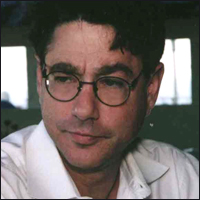
Hitler, throughout Mein Kampf, seems to have been aware of Jewish revolutionary activities and even declared that “the part which the Jews played in the social phenomenon of prostitution, and more especially in the white slavery traffic, could be studied here better than any other West-European city, with the possible exception of certain ports of Southern France…
“A cold shiver ran down my spine when I first ascertained that it was the same cold-blooded, thick-skinned and shameless Jew who showed his consummate skill in conducting that revolting exploitation of the dregs of the big city. Then I became fired with wrath.”[23]
This anger began to escalate after World War I when he saw what was happening in the press and theatre in Germany when art, in general, was being used to denigrate the German culture.
What perhaps moved Hitler’s anger to a new height was that the Jews were less than three percent of the population, yet they largely controlled the theatre and were promoting what he would call “filth” and “pornography.”[24]
For Hitler, these acts “must have been definitely intentional.”[25] Moreover, he got first-hand knowledge after World War I that pornography was almost exclusively a Jewish phenomenon.[26]
For example, Magnus Hirschfeld (1868-1935), a German-Jewish physician and sexologist and the father of the Gay liberation movement in Germany,[27] used his medical training as a pretext to promote homosexuality and, in 1897, built his own system of “the Scientific-Humanitarian Committee, the first organization anywhere devoted to the protection of homosexual rights.” Hirschfeld, himself a homosexual, was also
“the primary inventor of marriage counseling, Gay Liberation, artificial insemination, surgical gender ‘reassignment,’ and modern sex therapy…
“His goofy persona and conscientiousness transformed Sexology from an anthropological curiosity into popular German science. The Berlin monthlies, starting in the mid-twenties, referred to Hirschfeld solicitously as ‘the Einstein of Sex.”[28]
Hirschfeld was the Einstein of Sex because he “embraced a doctrine known as ‘sexual relativity.”[29] Hirschfeld specifically used the term “racism” to attack the sexual order. One of the central forces of the sexual order is that if the next generation is to survive, men and women ought to be married and produce children.
A homosexual act, by definition, is a hindrance to civilization precisely because it inexorably leads to all sorts of social and medical problems. While homosexuals ought to be free to practice their lifestyle in private—after all, isn’t a sexual act a private matter?—they should not seek to subvert the sexual order by trying to change the laws which are based on the natural order.
Hirschfeld indeed was a sex expert and surely he understood what was at stake. While the natural order makes it clear that there are only two sexes—male and female—Hirscheld postulated another doctrine, one more congruent with his revolutionary ideology.
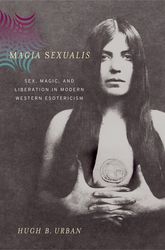 Hirschfeld “wrote that it was ‘unscientific’ to speak of two sexes. Between ‘full man’ and ‘full woman’ was an infinite string of sexual/gender possibilities.”[30]
Hirschfeld “wrote that it was ‘unscientific’ to speak of two sexes. Between ‘full man’ and ‘full woman’ was an infinite string of sexual/gender possibilities.”[30]
For Hirschfeld, the only force that could hinder him was Christianity, but he attacked it before proceeding with his sexual revolution. He wrote,
“The Christian supporters of the idea that any intercourse not serving procreation ‘is sinful fornication’ are not always proceeding logically. Otherwise, they would not only have to reject contraceptives but consequently would also have to forbid intercourse with a woman from the beginning of pregnancy up to the end of the nursing period; thus the man who soon after the wedding impregnated his spouse should not touch her for a year and half.”[31]
Hirschfeld spent a large part of his 1200-page book The Homosexuality of Men and Women deconstructing the Christian principles about sex.[32]
Hirschfeld was the Alfred Kinsey of his day and actually put his doctrines into practical use.[33] This began to take place in 1919 when Hirschfeld opened the Institute of Sexology in Berlin. Jewish scholar Mel Gordon of the University of California tells us that the institution
“quickly became one of the city’s most curious attractions. The Institute’s buildings, including a former mansion, were divided into areas for lectures, consulting offices, study rooms, laboratories, medical clinics, and a museum space devoted to sexual pathology.”[34]
Paul Johnson commented,
“The Foxtrot and short skirts, the addiction of pleasure in ‘the imperial sewers of Berlin,’ the ‘dirty pictures’ of sexologist Magnus Hirschfeld or the typical man of the times took on in the minds of the average citizen a repugnance that is difficult to recall in hindsight without some historical effort.
“In a number of highly celebrated provocations, the stage of the ‘20s dealt with topics like patricide, incest and other crimes and the deepest inclination of the times tended to self-mockery.”[35]
A number of Jewish icons such as George Gershwin, Ben Hecht, Douglas Fairbanks, and Sergei Eisenstein visited the school.[36] Eisenstein “enjoyed the Institute’s collection of sailor dolls—homemade paper toys that German homosexuals fashioned during the Great War.”[37] The library of the school,
“which contained the largest sex and pornographic book collection in Europe, remained accessible to all readers…
“Politically, the Institute provided a forum for progressive lawyers and government officials who sought to eradicate the laws against homosexuality and defend Germany’s legal abortion rights from the growing onslaught of fascist and religious parties.
“Most of the legal work involved suits protecting gay men against threats of petty blackmail….The Institute itself was a font of sexological activity. Pediatric care, abortions, ‘sexual rejuvenation’ and sexual ‘correction’ operations were conducted on the lower level of the main building.”[38]
The building contained all sort of sexual devices in order to advance the sexual revolution in Berlin.
“Glass cases of fetishistic objects and sex aids from preliterate, Asian, and European cultures filled two other rooms.
“In the open counters and boxes were collections of Mandigo dildos that squirted a milky solution, Moche water bottles with penis-shaped spouts, Sanskrit sex manuals, miniature torture instruments from a German brothel, sadistic drawings and assemblages created by Lustmord convicts, an entire picture window of ankle boots donated by a local fetishist, antique steam-driven vibrators, fake rubber breasts and vaginas taken from transvestite prostitutes, lacy panties found on the corpses of von Hindenburg’s heroic officers, and other such incontrovertible evidence of Hirschfeld’s new calculus of desire.”[39]
When Hirschfeld was spreading the gospel of sexual liberation throughout Germany, he was attacked by a number of Nazi students,
“prompting the publisher of his autobiography to remark that the ‘Nazis had chosen him from the very beginning as a symbol over everything they hated, and it was Hitler himself, who, after the fascist students attacked Hirschfeld in Munich in 1920 and left him badly injured, declared him in many public speeches as the very epitome of the repulsive Jew and the enemy of the German people.’”[40]
Six years later, Hirschfeld spread the sexual revolution in Russia under Stalin and hailed it as “marital bolshevism.”[41] Historian Otto Friedrich does not believe that Hirschfeld was taken seriously and therefore achieved next to no “notable goal,” but argues that his work was “a classic of pseudo-scientific pornography.”[42]
Many popular historians, even though they discuss the Weimar Republic, seem to stay away from addressing these historical issues.[43]
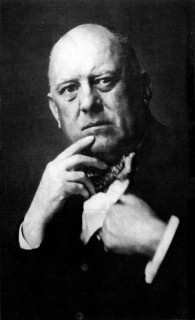 This was the sexual decadence of the Weimar Republic during the early years of the twentieth century before Nazi Germany, where sexual fetishism of all sorts was widespread.[44]
This was the sexual decadence of the Weimar Republic during the early years of the twentieth century before Nazi Germany, where sexual fetishism of all sorts was widespread.[44]
Even D. H. Lawrence, himself a proponent of sexual liberation, knew that the Weimar Republic had become a place for sexual debauchery, writing in a letter that “at night you feel strange things stirring in the darkness…There is a sense of danger…a queer, bristling feeling of uncanny danger.”[45]
Later, Christopher Isherwood, a homosexual and proponent of sexual liberation, went to Berlin to immerse himself into the gay bars, writing later, “There was terror in the Berlin air.”[46]
During that era, the Weimar Republic “stimulated all the external tics of sexual perversity. In the center of Europe, mesmerized audiences were warned, sits a nightmare municipality, a human swamp of unfettered appetites and twisted prurient proclivities…With Babylon and Nero’s Rome, Weimar Berlin has entered into our topological thesaurus as a synonym for moral degeneracy.”[47]
Gordon goes so far as to say that during that period Berlin “would have to be considered as one of the most faithless—or heathen—cities in the Western world.”[48] Why?
Because sexual decadence and perversion were widespread—so widespread in fact that Jewish revolutionaries used a “scientific” pretension to promote pornography. Gordon writes,
“Clinical studies of sexual perversions, such as von Krafft-Ebing’s Psychopathia Sexualis (Leipzig, 1901) and [Wilhelm] Stekel’s Sexual Aberrations (Vienna, 1922) were printed by scientific publishing houses and produced principally for therapists and legal scholars in Central Europe.”[49]
Wilhelm Stekel was an important figure in this movement because he not only advanced sexual fetishism but also collaborated with Sigmund Freud. Ernest Jones, a Gentile disciple of Freud during Freud’s early years, noted that both Freud and Stekel were the original founder of the first psychoanalytic society,[50] which is an implicit way of saying that both Freud and Stekel were on the same page.
Though the two men separated later, they were working toward a common goal: sexual revolution. Stekel ended up playing semantics in order to deconstruct what Western civilization considered perversion—he replaced the word “perversion” with his own term “paraphilia” in his book Sexual Aberrations.
Jewish scholar Peter Gay of Princeton notes that Freud’s Interpretation of Dreams makes references to Stekel’s use of symbols in dreams.[51] Stekel later wrote in his autobiography that Freud was not only Stekel’s “apostle” but also “my Christ!”[52]
Psychoanalysis, as we saw in a previous article, was a largely Jewish movement and was later called a “Jewish science.” What Gay refers to as the “nucleus” of the Psychoanalytic Society in Vienna in 1908 included people like Max Kahane, Stekel, Rudolf Reitler, Alfred Adler, and of course Sigmund Freud.[53]
Yet Freud, for fear that this would provoke an anti-Jewish backlash, distanced himself in public from psychoanalysis as a Jewish science[54] and even admitted that what Stekel was promoting was sexual perversion.[55]
Yet Freud knew that he too was promoting the destruction of sexual taboos, most particularly in his Three Essays on Sexuality, implying things such as perversion is just a different form of sexuality. He supported this sexual calculus by saying that all mankind at some point desire some form of sexual perversion.[56]
With this sexual revolution taking place, the Weimar Republic was basically establishing reasons for Nazi Germany:

“The numerous copies in multiple editions of [Psychopathia Sexualis and Sexual Aberrations] revealed an unintended secondary readership: other perverts. The salacious case histories of sadists, fetishists, Algolagnists, flagellants, and the like, formed a novel province in Weimar pornography.
“Under the guise of psychological research, graphic photographs and illustrations were added to still other strange biographical confessions and fantasies. Berliners seeking stronger erotic sensations and instruction for weird sex scenarios merely had to peruse Galante journals for the current ‘scientific’ offerings. Virtually every deviant practice had a layman’s society and private publishing arm.
“One ‘physician,’ Ernst Schertel, headed a hypnotic ‘Dream theater’ and several book clubs devoted to whipping and buttock fetishism.
“Schertel’s serialized periodicals explored the dark fantasy games and dramatics of animal lovers, worshippers of obese Dominas, sadistic teachers, bare-hand flagellants, incestuous necklace fetishists, urine drinkers, bondage freaks, high-heel stompers…
“German authorities attempted to shut down his Parthenon-Verlag in 1931 and Wilhelm Reich publicly opposed the perverse Dream Theater. But Schertel, working under foreign pseudonyms like Dr. F. Grandpierre, outwitted them all.”[57]
Of course, Gordon plays down the participation of Jews in the business, saying that while the Jews
“dominated certain cultural fields in pre-Nazi Berlin, especially publishing, law, medicine, theatre, graphic art, cinema, music, architecture, and popular entertainment, relatively few Jews were still involved in common prostitution with the exception of two picturesque types: Kupplerinnen (procuresses) and Chontes—zaftig whores from southern Poland.”[58]
It is understandable that Gordon is trying to dismiss a body of scholarship since that would eventually lead to a reevaluation of at least one reason why Nazi Germany was completely against Jewish revolutionary activity.
Gordon tells us that Wilhelm Reich, another Jewish sexual revolutionary whose work we have repeatedly examined in the past, believed that Hirschfeld’s work would advance the cause of fascism.[59] Gordon also tells us that as soon as Hitler came to power in 1933, “the Institute of Sexology was one of his first targets.”[60]
Nazi Germany quickly placed the graphic paintings of George Grosz, Jankel Adler, Rudolf Bauer, Cesar Klein, Max Pechstein, Ludwig Meidner, Otto Dix, Rudolf Schlichter, among dozens of others, under the heading of “degenerate art” because of their pornographic imageries.
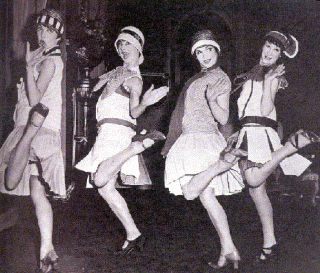 Throughout his own work, Gordon tells us how the Weimar Republic sought to refashion Germany through sexual revolution. He argues,
Throughout his own work, Gordon tells us how the Weimar Republic sought to refashion Germany through sexual revolution. He argues,
“Prostitution lost its exact meaning when tens of thousands were involved in complex sex attachments, all of a commercial nature. The vaguely Wilhelmian underpinning of middle-class Berlin slowly cracked and, over time, collapsed.
“Venereal disease, not flesh-peddling, threatened the immediate well-being of the capital. Syphilis and gonorrhea spread at an alarming rate. The city fathers, once proud watchdogs of the moral code, turned to Berlin’s public officials and social workers for help…
“Public and habitual masturbation, manifestations of shell-shock, grew to epic proportions, shaking morals as well as becoming an embarrassing disciplinary problem. In the countryside, the brutal corralling and rape of foreign women, usually peasant girls, by German recruits was reported with some frequency in the early dispatches…
“Roman-style orgies became synonymous with Etappe life…Sex, the historical lubricant for rallying a nation to armed conflict, was destroying the Kaiser’s war. “A dizzying panic overtook Berlin in October 1919. Not since Paris in the 1860s had a European city experienced the Edenic flush of total erotic freedom.
“With prostitution and all-night dancing already accepted features of contemporary Berlin life, what else could be added. Drugs and over-the-counter pornography appeared first…
“The most sought-after pornographic postcards and films had been imported from Paris and Budapest before the war. Now Berlin was patriotically producing its own brands in oversized graphic portfolios, ‘bachelor’ Galante magazines, photo sheets, and smokers…
“The sweet qualities of Gallic porno were supplanted in Berlin studios by the psychopathic scenarios from Krafft-Ebing. Forced, intergenerational, scatological, and obsessive fetish sex prevailed…The distinct erotica of Berlin was sold in specialized bookstores and here and there on the street…
“Wild sex and all-night antics could be made anywhere. In private flats, hotel rooms, and rented halls, drug parties and nude ‘Beauty Evenings’ were constantly announced and held.
“A gala atmosphere enveloped 1919 and 1920…In postwar Paris, a traveler could engage the services of a streetwalker for five or six dollars; but during the inflation in Berlin, five dollars could buy a month’s worth of carnal delights…Sex was everywhere and obtainable on the cheap…
“Child prostitution was a searing social issue long before and after the inflation era. It involved both female and male children, sex workers’ progeny, runaways, and troublesome adolescents. There seemed to be almost no bottom age for those seeking physical companionship with children. And virtually no end to willing girls and boys.”[61]
What was even more troublesome during the Weimar era was that sexual magic was used as a form of revival; it was viewed as a form of religion and prayer.[62] Gordon states that sex magic was used as a
“bodily manifestation of lost esoteric wisdom, techniques of Gnostic faith, flipped transmogrifications of flesh, even divine rungs for ultimate human salvation…Sexuality was the fuse and hidden spring of Weimar Germany’s newest dogmas.”[63]
The early part of Europe in the twentieth century was affected by the revival of occultism, with many occult groups and fringe movements springing up in order to revive old sexual practices and rituals. Occult groups seeking sexual magic were ubiquitous.[64] A year before Hitler came to power,
“Berlin alone supported the flashy productions, seances, and publications of 20,000 itinerant telepathists, wonder-working healers, palm readers, storefront clairvoyants, Hollow-Earth adherents, alchemists, stage mesmerists, doomsday prophets, Gypsy-clad fortunetellers, and trans-performers.”[65]
It must also be remembered that it was a time when black magicians such as Aleister Crowley roamed Europe with their sexual rituals in order to gain entrance into what Crowley would later refer to as the New Aeon.[66] It has been argued by some that Crowley was widely involved in the sex industry in the Weimar Republic.[67]
All of these satanic sex ceremonies were done as a form of blasphemy in Berlin, where some of the participants also took drugs in order to enhance their sexual magic.[68] In Gordon’s words, there were “dionysian-like festivities,” where hymns to Pan were chanted and a goat was sacrificed to begin the sexual ceremony.[69] Scholar John Alexander Williams tells us that
“By 1930 an estimated one hundred thousand people took part in organizations that were either dedicated wholeheartedly to nudism or practiced it regularly. The movement of some eighty thousand hard-core nudists also became more ideologically diverse, splitting into bourgeois and socialist sectors. An umbrella organization for bourgeois nudists, the Reich Federation for Free Body Culture, was founded in Leipzig in 1924.”[70]
Yet by 1932, the power of sexual eroticism began to decline during the rise of Nazi Germany—most pornographic publications were banned and nudist clinics such as Koch’s were shut down.[71]
By 1933, Hirschfeld’s Institute of Sexology was ransacked and vandalized by SA-men and students. Archival files were destroyed, and thousands of books and manuscripts were burned.[72] In Gordon’s own words:
“Berlin’s sex industry contracted and nearly disappeared throughout the summer months of 1933.”[73]
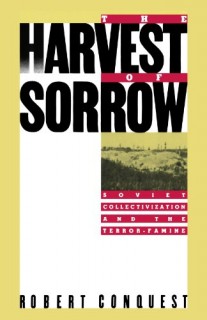 What we are seeing here is that without Jewish revolutionary movements such as Bolshevism and the sexual decadence of the Weimar Republic, there probably wouldn’t be Nazi Germany. As a corollary, to say that Nazi Germany had nothing to do with Jewish behavior is a complete denial of history—and a thesis that has become a standard for many Jewish historians.
What we are seeing here is that without Jewish revolutionary movements such as Bolshevism and the sexual decadence of the Weimar Republic, there probably wouldn’t be Nazi Germany. As a corollary, to say that Nazi Germany had nothing to do with Jewish behavior is a complete denial of history—and a thesis that has become a standard for many Jewish historians.
Goldhagen in particular does not want to address these serious issues and leave them out of his book precisely because that would lead him to historical suicide. He writes that “anti-Semitism springs from the bosom of the culture of the anti-Semites and not from the character of Jews’ actions…”[74]
Here we go again. Anti-semitism, anti-Semitism, and anti-Semitism. You say something that Goldhagen or the rabbis do not like? Well, you know what you are. You know you’ve got anti-Semitism in your DNA.[75]
Paul Austin of the neocon flagship the American Thinker implies that you’ve got anti-Semitic meme running through your veins.[76] And you’ve inherited from the Nazis. Listen to this report from the Jerusalem Post:
“European attempts to ban circumcision and ritual slaughter are outright antisemitism, Russian Chief Rabbi Berel Lazar stated Monday evening. Addressing a conference organized by the Rabbinical Center of Europe, the Chabad hasid blasted efforts to legally proscribe Jewish practices as continuing the work of the Nazis using different methods.”[77]
To return to Goldhagen, one needn’t be a historian or scholar to see that his argument here is generally dumb. If Goldhagen’s statement here is true, that what he calls anti-Semitism has nothing to do with Jewish behaviors and has everything to do with people hating Jews, who was responsible for the Bolshevik Revolution? Hitler?
To whom did Winston Churchill address his essay “Zionism vs. Bolshevism: The Struggle for the Soul of the Jewish People”? What was Alexander Solzhenitsyn thinking when he wrote Two Hundred Years Together? What was going through Robert Conquest’s head when he wrote The Harvest of Sorrow: Soviet Collectivization and the Terror-Famine?
More recently, who took America to Iraq? Who said “Fuck the E.U”? Who supported neo-Nazis in Ukraine?[78] Who is currently looting Ukraine? Who spent seven decades collaborating with Nazis?
 Who is saying that Vladimir Putin is the new Hitler? Who is using every strike of pen to say that Russia is basically a rotten place to live in?[79] Who is praising the Goyim such as Condoleezza Rice for deconstructing Russia?
Who is saying that Vladimir Putin is the new Hitler? Who is using every strike of pen to say that Russia is basically a rotten place to live in?[79] Who is praising the Goyim such as Condoleezza Rice for deconstructing Russia?
Who is pushing America to take serious and grave actions against Russia? Who is still invading your privacy through the NSA—with your own money? Who is using your money to create terrorism around the globe? Who sexually and brutally tortured Iraqi prisoners through the CIA, which misled the government and the public?[80]
Who is demolishing Palestinian mosques and medical centers at this present moment? Who is reviving Jewish occultism such as the Zohar and the Kabbalah through recent movies such as Noah? Who has been dominating U.S. politics to the point that Republican hopefuls for 2016 have to literally “woo Jewish donors”?[81]
Surely the Goldhagen thesis has been weighed and found wanting. Currently, even the Associated Press is saying that “As recently as the 1970s, Baghdad was lauded as a model city in the Arab world. But now, after decades of seemingly endless conflict, it is the world’s worst city….
“Residents of Baghdad contend with near-daily attacks, a lack of electricity and clean water, poor sewerage and drainage systems, rampant corruption, regular gridlock, high unemployment, and myriad other problems.”
J. J. Goldberg of the Jewish Daily Forward is saying the same thing, that the invasion has literally destroyed Iraq.[82] And the neocons knew very well that an invasion of Iraq would literally destroy the country.
Political science professor Stephen Zunes declared that people like Richard Perle, David Wurmser, Douglas Feith, among others, knew that the war would actually rip the country apart. Last month alone, almost two thousand people lost their lives in Iraq.
 It should be clear by now that one cannot examine Nazi Germany through the parameters of the Holocaust establishment, precisely because they do not want to examine why Hitler actually moved to different directions.
It should be clear by now that one cannot examine Nazi Germany through the parameters of the Holocaust establishment, precisely because they do not want to examine why Hitler actually moved to different directions.
One has to go beyond the Holocaust establishment in order to provide deep psychology of Nazi Germany—and one historian who has done this in an indirect manner quite well in recent times is R. H. S. Stolfi. (I would highly recommend his book.)
As we shall see, Hitler moved from deep-seated wrath to actions taken against what he called “intentional acts.” He said, “I had now no more hesitation about bringing the Jewish problem to light in all its details. No. Henceforth I was determined to do so.”[83]
By the summer of 1933, “Berlin’s sex industry” almost disappeared, and by the spring of 1934, approximately 20 brothels were left in Berlin.[84] In 1900, Berlin was called “contemporary Babylon and Nineveh” by some observers.[85] In fact, Berlin was commonly named “the Whore of Babylon.”[86]
After the rise of the Third Reich, sexual decadence plummeted, and by this time Judea has already declared war on Germany. We will continue to examine these extremely complex issues in the next article.
[14] Richard M. McCormick, “Coming Out of the Uniform: Political and Sexual Emancipation in Leontine Sagan’s Madchen in Uniform (1931),” Isenberg, ed., Weimar Cinema: An Essential Guide to Classic Films of the Era (New York: Columbia University Press, 2009), 271.
[15] Richard M. McCormick, “Coming Out of the Uniform: Political and Sexual Emancipation in Leontine Sagan’s Madchen in Uniform (1931),” Isenberg, ed., Weimar Cinema: An Essential Guide to Classic Films of the Era (New York: Columbia University Press, 2009), 271.
[16] Ibid., 272.
[17] Paul Johnson, Modern Times: The World from the Twenties to the Nineties (New York: HarperCollins, 1983), 114.
[18] McCormick, “Coming Out of the Uniform,” Weimar Cinema, 273.
[19] Lotte H. Eisner, The Haunted Screen: Expressionism in the German Cinema and the Influence of Max Reinhardt (Berkeley: University of California Press, 2008), 40.
[20] Eric D. Weitz, Weimar Germany: Promise and Tragedy (Princeton: Princeton University Press, 2009), 250.
[21] Johnson, A History of the Jews, 479.
[22] Janet Ward, Weimar Surfaces: Urban Visual Culture in 1920s Germany (Berkeley: University of California Press, 2001), 142.
[23] Hitler, Mein Kampf, 43.
[24] Ibid., 42-43.
[25] Ibid., 43.
[26] See for example Edward Bristow, Prostitution and Prejudice: The Jewish Fight Against White Slavery (New York: Schocken, 1983).
[27] See for example Ralf Dose, Magnus Hirschfeld: The Origins of the Gay Liberation Movement (New York: Monthly Review Press, 2014).
[28] Mel Gordon, Voluptuous Panic: The Erotic World of Weimar Berlin (San Francisco: Feral House, 2006), 153.
[29] Ibid.
[30] Ibid., 153-154.
[31] Elena Mancini, Magnus Hirschfeld and the Quest for Sexual Freedom: A History of the First International Sexual Freedom Movement (New York: Palgrave, 2010), 13.
[32] See Magnus Hirschfeld, The Homosexuality of Men and Women (New York: Prometheus Books, 2000).
[33] Gordon, Voluptuous Panic, 153-163.
[34] Ibid., 164.
[35] Johnson, Modern Times, 115.
[36] Gordon, Voluptuous Panic, 164.
[37] Ibid., 165-166.
[38] Ibid., 164.
[39] Ibid., 165.
[40] Jones, Monsters from the ID, 141-142.
[41] Ibid., 142.
[42] Otto Friedrich, Before the Deluge: A Portrait of Berlin in the 1920s (New York: Harper Perennial, 1995), 233.
[43] See Mary Fulbrook, A History of Germany, 1918-2008: The Divided Nation (Malden, MA: Blackwell, 2009); Detlev J. K. Peukert, The Weimar Republic (New York: Hill & Wang, 1989); Peter Gay, The Weimar Republic: The Outsider as Insider (New York: W. W. Norton, 2001).
[44] Ibid., 171-183.
[45] E. Michael Jones, Monsters from the ID: The Rise of Horror in Fiction and Film (Dallas: Spence Publishing Co., 2000), 134; also Paul Johnson, Modern Times: The World from the Twenties to the Eighties (New York: Harper & Row, 1983), 136-137.
[46] Ibid., 134.
[47] Gordon, Voluptuous Panic, 1, 2.
[48] Ibid., 8.
[49] Ibid., 186.
[50] Ernest Jones, The Life and Work of Sigmund Freud (New York: Basic Books, 1953), 312, 420
[51] Peter Gay, Freud: A Life for our Time (New York: W. W. Norton, 1998), 114, 173.
[52] Ibid., 173.
[53] Ibid., 174.
[54] See Jay Geller, “Freud, Bluher, and the Secessio Inversa,” Daniel Boyarin, Daniel Itzkovitz, and Ann Pellegrini, ed., Queer Theory and the Jewish Question (New York: Columbia University Press, 2003), 93.
[55] Gay, Freud, 187.
[56] Geller, “Freud, Bluher, and the Secessio Inversa,” Queer Theory, 95.
[57] Gordon, Voluptuous Panic, 186, 188.
[58] Ibid., 41.
[59] Ibid., 168.
[60] Ibid., 169.
[61] Ibid., 15-16, 17, 20, 21, 22, 24, 25, 44.
[62] Ibid., 193-194, 195-213.
[63] Ibid., 194.
[64] Ibid., 199-227.
[65] Ibid., 195.
[66] For a history of sexual magic in the twentieth century, see for example Hugh B. Urban, Magia Sexualis: Sex, Magic, and Liberation in Modern Western Esotericism (Berkley: University of California Press, 2006).
[67] Tobias Churton, Aleister Crowley: The Beast in Berlin: Art, Sex, and Magick in the Weimar Republic (Rochester, VT: Inner Traditions, 2014), forthcoming.
[68] Gordon, Voluptuous Panic, 199-204.
[69] Ibid., 202-203.
[70] John Alexander Williams, Turning to Nature in Germany: Hiking, Nudism, and Conservation, 1900-1940 (Stanford: Stanford University Press, 2007), 27.
[71] Gordon, Voluptuous Panic,., 249.
[72] Ibid., 250.
[73] Ibid., 252.
[74] Daniel Jonah Goldhagen, Hitler’s Willing Executioners: Ordinary Germans and the Holocaust (New York: Alfred A. Knopf, 1996), 39-40.
[75] Yossi Lempkowicz, “‘Anti-Semitism is Part of Europe’s DNA,’ Brussels Conference is Told,” European Jewish Press, September 5, 2012.
[76] Paul Austin Murphy, “Memes about Jews,” American Thinker, March 30, 2014.
[77] Sam Sokol, “Russian Chief Rabbi Calls Circumcision Opponents Anti-Semites,” Jerusalem Post, March 24, 2014.
[78] For a recent development, see Tariq Ali, “How Vladimir Putin Became Evil,” Guardian, March 28, 2014.
[79] Sergey Maidukov, “The Enigmatic ‘Russian Soul,’” American Thinker, March 28, 2014.
[80] Greg Miller, Adam Goldman and Ellen Nakashima, “CIA Misled on Interrogation Program, Senate Report Says,” Washington Post, March 31, 2014.
[81] Maeve Reston, “2016 Republican Hopefuls Hope to Woo Jewish Donors,” LA Times, March 29, 2014; see also Paul R. Pillar, “The Sheldon Primary,” National Interest, March 26, 2014; Anthony Weiss, “In Vegas, GOP Jews Focus on Israel, While Contenders Focus on Adelson,” Jewish Telegraphic Agency, March 31, 2014.
[82] J. J. Goldberg, “Baghdad Ranked ‘Worst City in World’ to Live In,” Jewish Daily Forward, March 23, 2014.
[83] Hitler, Mein Kampf, 43.
[84] Gordon, Voluptuous Panic, 252.
[85] Cited in David Clay Large, Berlin (New York: Basic Books, 2000), 93.
[86] Jill Suzanne Smith, Berlin Coquette: Prostitution and the New German Woman, 1890-1933 (Ithaca: Cornell University Press, 2013), 3, 4, 7, 142. Smith of course does not like the word, even though she implies throughout her book that the sexual decadence in Berlin was quite rampant.

Jonas E. Alexis has degrees in mathematics and philosophy. He studied education at the graduate level. His main interests include U.S. foreign policy, the history of the Israel/Palestine conflict, and the history of ideas. He is the author of the new book Zionism vs. the West: How Talmudic Ideology is Undermining Western Culture. He teaches mathematics in South Korea.
ATTENTION READERS
We See The World From All Sides and Want YOU To Be Fully InformedIn fact, intentional disinformation is a disgraceful scourge in media today. So to assuage any possible errant incorrect information posted herein, we strongly encourage you to seek corroboration from other non-VT sources before forming an educated opinion.
About VT - Policies & Disclosures - Comment Policy

